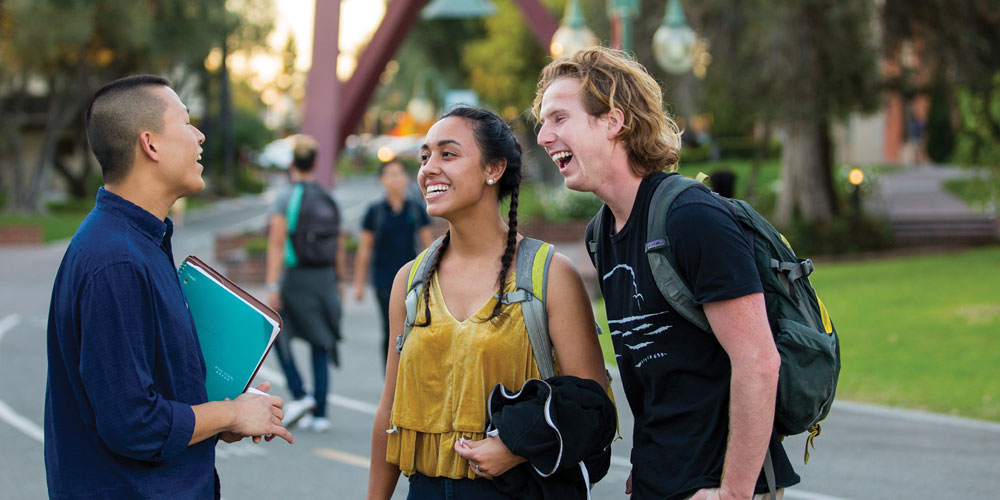Magazine
Every aspect of higher education has transformed over the past decade, but for campus leaders who oversee student success and retention, currently a unique convergence of trends presents a monumental challenge to determining how best to empower students to succeed in their studies and, subsequently, in their careers. Consider two factors that have particularly noticeable impacts on student populations:
Increasing mental health needs
In its 2016 survey of incoming freshmen, the Higher Education Research Institute at UCLA found that 13.9% of incoming freshmen anticipated a “very good chance” that they would seek personal counseling at some point in their college experience, up from just 3.5% of freshmen in 1991. In a 2017 survey by the American College Health Association, 63.4% of students reported that within the last year, they had felt “overwhelming anxiety,” and 41.9% said they “felt so depressed that it was difficult to function.” Though some of this increase is due to increasing awareness of mental health needs among students, it still results in a growing need for resources, a need of which campus leaders are wellaware. An August 2019 report from the American Council of Education (ACE) surveyed 400 college and university presidents: 80% reported that student mental health has become more of a priority over the past three years, and 72% said they had reallocated or found additional funds to address these needs.
Increasing numbers of nontraditional students
The most recent Annual Financial Aid Survey of CCCU Institutions found that in 2017-18, more than half of the 62 CCCU institutions who participated in the survey reported a decline in their traditional undergraduate enrollment. In fact, more than half of the enrollment at surveyed institutions now consists of undergraduate degree completion and graduate programs. This means that many CCCU students are attending classes online or in the evenings; they are committed to their studies, but they aren’t able to connect and engage in the same way as students have in the past.
On their own, each issue would present challenges alongside the opportunities it creates for both students and institutions. But Christian colleges and universities must address these challenges, and many others, all at once – often with steadily tightening budgets that make increasing student care services difficult, if not impossible. How are CCCU institutions responding?
Addressing a Growing Mental Health Crisis
At Biola University in La Mirada, California, the journey to better understanding and meeting student needs began with a key transition in 2016: André Stephens was stepping into the role of vice president for student development. Stephens may have been new to student development, but he wasn’t new to Biola; at that point, he had been working with the enrollment team at the university, which has about 4,000 undergraduate students, for more than 20 years.
Thus he was armed with expansive institutional knowledge even as he took a deep dive into the new division he was overseeing. In his conversations with students, faculty, and staff across campus over the first year, he took note of a number of things that were significantly shaping Biola students’ experiences. One of the most noticeable was an increase in mental health challenges among students.
“It was apparent that our staff and faculty were doing an excellent job of reacting to student needs, especially when in times of high need or when a crisis arose,” Stephens says. “The challenge was that we weren’t able to do work in the areas of prevention and education to minimize the number of students who were going into those times of high need or crisis mode, and so we felt we had to take a more proactive approach.”
A key step Stephens and his team took to inform their approach was to obtain hard data to supplement the stories that he had already heard across campus. Thus, in 2018, Biola administered the National College Health Assessment (NCHA) for the first time in 15 years, and the results were telling. Not only did it confirm that Biola students were experiencing anxiety, stress, depression, and other stressors at levels on par with their peers nationally, but in some cases, the rates were even higher than the national average.
When the NCHA results came in, Stephens and his student development team were already in the midst of reassessing both their department’s structure and how they engaged their campus partners from other areas, such as the counseling center, food services, and campus safety. One result was a shift in the structure of the student development department to include three areas for promoting and supporting student wellness: spiritual development, community life, and a new student wellness area.
The new structure allows for a key component in addressing student needs, says Lisa Igram, Biola’s dean of student wellness: collaboration. “The whole idea of wellness is a complex social problem. There’s not one thing that’s causing this sudden rise in student anxiety, depression, stress, or their inability to cope,” she says. “There are all kinds of things that are happening that are contributing to this, so that tells us that a complex solution is required. There’s not going to be one thing that will shift campus culture; it’s going to be multi-pronged. So that means we have to be collaborative, cohesive, and able to hit multiple levels in our approach.”
Once the NCHA data was in hand, the Biola team’s next step was to pull together a student health and wellness committee that involved all aspects of campus – 35 people ranging from administrators to staff to faculty to students from across departments and specialties. Stephens, Igram, and the committee spent the next year diving not only into the NCHA data but into national research as well with the goal of coming up with a definition for what student wellness at Biola University looks like.
It was important to take the time to do this before developing a plan of action, Igram says, because there is no single definition of what “wellness” actually means. It was also key to factor in Biola’s defining mission as a Christ-centered institution of higher education.
“If the liberal arts is designed to develop a student as a whole person and to help them be able to ask good questions in order to solve problems in culture and community, but stress and anxiety inhibit that [growth], then there’s something that we need to do as an institution so they can engage in that education and be developed in mind and character to really impact the world for Jesus Christ,” she says.
At the time of writing, the committee was in the midst of utilizing the NCHA data and its year of learning and brainstorming to finalize a new strategic plan on student wellness to guide Biola leadership. Everything in the plan will work toward the goal of improving collaboration, communication, and education, Igram says.
Though the process took time, Stephens says that doing so while keeping in mind the end goal of a definitive strategy was of vital importance – not just for Biola as an institution, but for the long-term health of its students. “We didn’t suspend any of our current work [during this process] – our existing resources were still in place and students could continue accessing them as needed,” he says. “But the impetus was to look [at caring for student wellness] over the long haul – not just for how we as an institution do this in the longterm, but how we can set up students to succeed and be well beyond their time at Biola. [To do that,] we had to make sure the foundation we were building on was strong.”
Recognizing the need for that kind of thoughtful, deliberate collaboration to meet student needs has also inspired significant changes at North Central University (NCU) in Minneapolis, Minnesota. There, student success leaders recognized that, somehow, a gap had formed in their process for identifying students who were struggling. Though there was a homegrown system in place for faculty and other campus leaders to flag students who were struggling academically or emotionally, there were students who had never been flagged who were being dismissed from the institution for low grades.
“That should never happen. We can’t create a plan for success for a student that we don’t know is struggling,” says Erin White, NCU’s dean of student advocacy at the time (she recently became NCU’s director of institutional research). “So we knew we had students falling through the cracks, and we knew that if there were students who were getting academically dismissed, there were likely other students that were in the murky middle.”
Bolstered by support from the administration to find a solution, White began the process of looking at different technological vendors that could help NCU meet its needs – not only to better identify those students slipping through the cracks, she says, but to do so with a system that did so efficiently, integrated well with other technologies on campus, had the flexibility to be updated by campus leaders if needed, and was sustainable for NCU’s size of 1,100 undergraduate students.
In addition to researching and engaging campuses who were using similar technologies, a key part of the discernment process, White says, was partnering with NCU’s IT team from the very beginning, as they knew the best questions to ask to make sure any new system would be able to fit well into the campus current IT structure. “A huge part of our success, I think, was having IT invested and connected from the very beginning, so I would highly advise anyone considering an option like this to do the same,” White says. “We all know IT is so busy all the time, so making sure we had IT staff that were dedicated to this project and had time to research and advocate for it was huge.”
Having faculty members who were leaders on campus was another key step to the success of the implementation process, White says. “Make sure that those faculty who other faculty look to for leadership and advice are a part of the implementation and helping you create the messaging for implementation for both faculty and students, if your faculty are advisors.”
Once NCU had settled on a platform called Starfish and had implemented it on campus with the help of those key stakeholders, White and her colleagues realized their new system worked well – unexpectedly so. On the old system, there had been around 450 flags on student issues raised in a given academic year; in the first year of using Starfish, there were more than 4,500. “We knew with the automatization process, we’d have an increase in flags – I didn’t expect to have as much of an increase as we’ve had,” White says. “It was amazing in a lot of ways because we had so much information we hadn’t had before, but the challenge was how to keep up with it.”
After the first semester of using the platform, White and her team sat down to adjust what in the workflow could be automated and to work more with faculty and other academic leaders to garner their assistance in following up with students. Even with the unexpected increased workload, White says, it quickly became apparent that NCU’s decision to utilize technology like Starfish was the right one. Not only did it centralize information about student success in one platform and encourage cross-departmental collaboration and engagement with students in need, White says it also received strong positive feedback from students who used it.
“I was actually surprised that in our first year, I received no negative feedback from students. I think a big factor is that it’s a system that is very transparent, and students today really appreciate that level of transparency,” she says. “They can see what the professor says about them, and they can see all of the various follow-ups that are in place to help them stay on track.”
Serving Students Who Might Not Step Foot On Campus
Proactive engagement and intentional communication are not only useful in addressing students’ mental health needs, but they are also vital for engaging students in online and non-traditional programs.
Denver Seminary knows this well. Though the seminary already had online courses, the first fully online program – the Master of Divinity (M.Div.) degree – launched in 2016, says Aaron Johnson, Denver Seminary’s associate dean of educational technology. The M.Div. was soon followed by additional master’s degree options in both Christian studies and biblical and theological studies. Now, more than 150 of the seminary’s 1,000 students are pursuing fully online degrees. “Our online course portal, Moodle, is one of the busiest ‘buildings’ on campus,” Johnson says. To keep student course engagement efficient, an integration between Moodle and Campus Management’s CampusNexus Student enables the seminary to handle data transfers quickly.
The journey began with a 2015 study of accepted students who did not enroll. “The most important data point [we learned] was that Denver Seminary remained their first choice, even if they enrolled at a different institution,” Johnson says. Though students had been interested in the institution’s training and mentoring experience and its relational culture, a big obstacle stopped nearly everyone they surveyed, he says: “They could not uproot and move their families or leave their jobs.”
Since Denver Seminary emphasizes the importance of relationships both in and out of the classroom, campus leaders prioritized this as part of both the online experience and the experience at its satellite locations in Amarillo, Texas, and Washington, D.C. “Spiritual development can take root anywhere we are in relationship with God and others,” Johnson says. “For online students and residential students, it is the same: We grow spiritually when we converse with God and behold his presence in the learning process.”
The seminary works to make sure online students feel connected to their instructors and peers, but they are also empowered to have vital face-to-face connections to help them in their ministerial training, since online students are required to find a local mentor to journey with them through the seminary experience, Johnson says.
Seminary leaders also work to ensure online students’ voices are heard as they improve the academic experience beyond standard course evaluations. For example, a grant enabled the seminary to fly several online students to Denver to spend time at campus events and meet with faculty, Johnson says.
“We also hold monthly faculty committee meetings where we [use] Zoom [to connect with] different online students and interview them to learn about their experience and the challenges they face,” he says. “Though students come from diverse backgrounds and may have very different demographics, their common challenges and desires emerge as we hear them tell their stories.”
It’s that kind of intentional engagement with students that is so key to engaging online and non-traditional students, says Norlan Hernandez, Biola’s director of online and graduate student success. “Online students are often doing education in the midst of everything else, and so engagement is not their number one priority,” he says. “So we try to do our best to fit the reality of where we are in their lives but to continue to engage the student and understand their particular needs.”
One technique that has helped Biola’s leaders think through the effectiveness of their own online and non-traditional programs has been to put themselves in the shoes of the student, Hernandez says. “We often create programming from the university perspective, and we have a blind spot as to how the student is experiencing the program and all facets,” he says. “So I would recommend going through a full student cycle from beginning to end so they can evaluate every touch point to see how they’re experiencing admissions, advising, the classroom, and so on in order to better address challenges.”
Both Denver Seminary and Biola have ways to engage online and non-traditional students with lectures and other campus events that happen outside the classroom, but they stressed the importance of shaping even those experiences to meet students’ needs.
“The greatest challenge for online learners is that they are fitting education into their already demanding lives,” Johnson says. “They are making education work in the midst of full-time jobs, caring for a family, and serving in their churches and communities.”
Two new ways the seminary connects its online and satellite campus students to events outside the classroom is by hosting a monthly live video called the Den- SemCast, which includes speakers and topics selected specifically by the online students, and through its Engage360 podcast, Johnson says.
At Biola, Hernandez and his team have worked to make sure the kinds of communication they send to students – whether it is newsletters with academic updates, information on professional development opportunities, or links to campus chapels and other events – is tailored to fit the time demands of their students. “We know our students are juggling through life along with work, so they don’t have time for a 30-40 minute sermon,” Hernandez says. “So we try to do bite-sized communication so they can still feel engaged and informed without overwhelming them.”
MORGAN FEDDES SATRE is the CCCU’s communications specialist and managing editor of Advance. She is an alumna of both Whitworth University and BestSemester’s L.A. Film Studies Center and is currently pursuing her M.Div. at Fuller Seminary.




